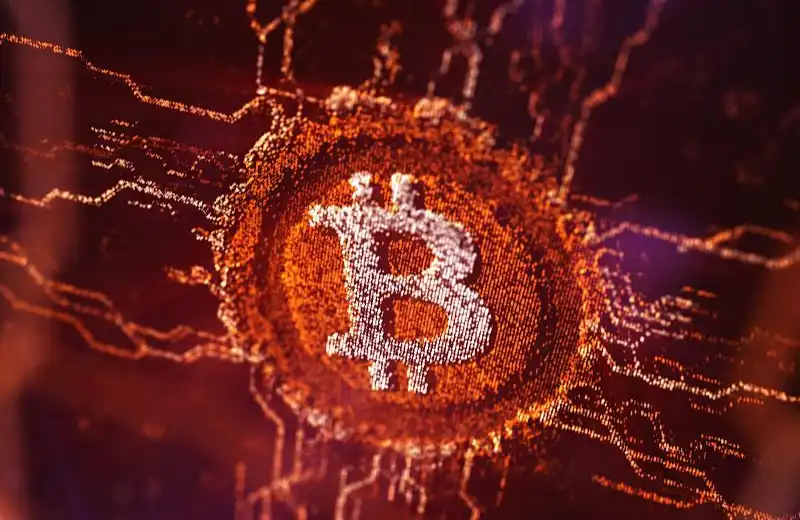BGB Joins the Burn Battle, Who Can Replicate the Platform Coin by 10x?
Editor's Note: On August 14, Bitcoin hit a new all-time high, and Ethereum's continuous rise seemed to signal the imminent arrival of altcoin season. Platform tokens took the lead, with OKB surging to a historic high yesterday, followed by BNB unwilling to lag behind, breaking through $865 with its high market cap, refreshing its previous peak. Despite Binance going through several months of adjustment after CZ stepped down as CEO, this year's launch of Binance Alpha successfully executed a sharp turn and strongly entered the Web3 wallet track. While the launch frequency of Launchpool and Launchpad projects has decreased, BNB holders can still enjoy exclusive airdrop benefits. Furthermore, as the concept of "treasury" in the stock market has risen, BNB swiftly laid out related tracks, further driving the price surge and demonstrating strong market momentum.
Only those brave enough to burn money have the opportunity to print new money.
This afternoon, OKX dropped a bombshell in the market—a one-time large-scale burn of 65.25 million OKB, with a market value reaching hundreds of millions of dollars at the current price. After the announcement, the price of OKB rapidly surged, experiencing over 100% growth in a short period, becoming the center of attention in a relatively sluggish market environment. This kind of fluctuation has led many investors to feel a sense of déjà vu.
The market's imagination quickly returned to four years ago—2021, during the sensational "platform coin burn war." At that time, exchanges repurchased and burned their own platform coins with real money, not only reducing market circulation and creating scarcity but also signaling profitability and business growth to the outside world through this means. It was an intense arms race without gunfire: each burn announcement drove the coin's price up and reshuffled market capitalization rankings.
Now, as OKB once again initiates a large-scale burn, the market's emotions and memories are reignited simultaneously. The difference is that the industry environment in 2025 is already unlike that of the past—global regulations are stricter, and the competition model and ecological layout among exchanges have undergone significant changes.
However, this does not prevent us from asking the same question—on today's platform coin track, is it still possible to see a tenfold price surge like that of 2021?
Retrospect on the 2021 Platform Coin Burn War
Let's rewind the timeline back four years.
From the end of 2020 to the beginning of 2021, the crypto market experienced an epic bull run. Bitcoin broke through the $20,000 mark and continued to rise, while Ethereum returned to the thousand-dollar range, leading to a comprehensive breakout of altcoins. A large amount of speculative capital first poured into low-price, high-volatility altcoins, driving up short-term gains and quickly igniting market sentiment.
Subsequently, as the altcoin profit funds were cashed out and flowed back, the exchange's trading volume and profit were significantly boosted.
At this point, the platform token possessed the conditions for a "post-pump": the high profit brought by the bull market enabled the exchange to buy back and burn tokens on a large scale, reducing the circulating supply and creating scarcity; and the demand for market value management made exchanges willing to use burning to demonstrate strength to the market.
The top platforms keenly seized this opportunity, using burning as a powerful tool for brand competition and investor confidence games.
A "burn show of strength," catalyzed by the altcoin frenzy and fueled by exchange profits, thus began. The platform token completed a transition from "catch-up pump" to "lead pump" in the market.
In that burning battle, no one was willing to be a silent bystander.
The actions of major exchanges, in terms of frequency, scale, and variety, were almost as stimulating as the price curve. In order to occupy a higher position on the market value rankings, they demonstrated their strength to the market in different ways—some launched a fierce attack that shook the entire market in one go, some chose a steady pace to build trust, some directly confronted the secondary market, and some relied on high-frequency activities to maintain visibility.
Eventually, on the battlefield, four camps with distinct styles emerged, each representing a different playstyle: BNB, HT, OKB, and FTT. They not only shaped the landscape of platform tokens in 2021 but also provided a sample for later entrants to imitate or even improve upon.
In that smoke-filled burning battle, BNB was the first cannon to fire.
In April 2021, Binance burned a total of 1,099,888 BNB in one go, amounting to a staggering $5.95 billion at the time, directly setting a new record for the single largest burn in crypto history. This not only drastically reduced the circulating supply but also demonstrated to the market what "profit-taking speed" means. Following that, CZ threw out an even more aggressive signal—achieving the 100 million token burn goal ahead of schedule and introducing an automatic burn mechanism, turning this action into a sustainable, predictable positive development. With such bold moves and steady progress, BNB surged from $37 to $690 during the bull market that year, propelling its market value into the global top three.
Similar to BNB, HT's rise was not the first wave of leadership but went through the rhythm of "altcoins rise first—platform tokens rise later." From January to February 2021, funds mainly flowed into hot altcoins. It wasn't until these funds flowed back to exchange profits and platform tokens that HT saw a concentrated eruption. Starting from around $4 in early January 2021 to a high of nearly $39 in May, it surged nearly 10 times.
OKB, on the other hand, chose a more direct approach. It eliminated the middle buyback step and instead directly bought and burned tokens on the secondary market. This strategy was like shooting a bullet directly into the price curve, reducing the space for speculators to ambush in advance on the one hand, and also creating a significant market impact at the moment of announcement. Throughout 2021, OKB burned nearly 30 million tokens in total, and the price surged from single digits straight to $40, firmly holding its position in the second tier.
As a newcomer, FTT clearly did not want to fall behind its long-standing competitors in terms of pace. FTX opted for high-frequency moves—weekly buybacks and burns, incorporating all revenue from trading fees, leveraged token redemption fees, and futures funding rates into its arsenal. This rhythm allowed FTT to remain at the center of discussions throughout the 2021 bull market, with its price peaking at $85, second only to BNB and OKB. However, this model is highly dependent on trading volume, and once the market turns around, the firepower will be depleted. As expected, in 2022, amidst the exchange collapse, FTT's story came to an abrupt end, plummeting from stardom to ruins.
The intense token burning battle primarily took place in the first four months from the beginning of 2021 to spring.
From January to April, platforms such as BNB, OKB, HT, and FTT almost regularly announced record-breaking buyback and burn figures, with single events amounting to hundreds of millions of dollars. Coupled with the high trading volume during the bull market, token prices surged one after another, driving market sentiment to new highs.
Entering July to September, the burning pace continued, but the scale decreased compared to the first half of the year, with more announcements aimed at meeting expectations. Token prices responded more moderately, entering the cooldown period. By the fourth quarter, as BTC and ETH underwent corrections and exchange trading volumes significantly decreased, both the scale and frequency of burns decreased. The news effect could no longer drive the strong upward movement of platform tokens, and the hype quickly subsided.
In the end, this nearly year-long token burning arms race not only left a steep peak-and-valley pattern on the price curve but also reshaped the landscape of platform tokens. BNB, with its dual advantage of firepower and rhythm, firmly held the absolute lead; OKB, with its stable mechanism and decisive execution, firmly secured its position in the second tier; while FTT, although once dominating the bull market, ultimately collapsed in 2022 due to an over-reliance on trading volume and external factors, becoming a cautionary tale in the history of platform tokens.
The aftermath of this battle continues to this day, serving as a sobering lesson for newcomers in the platform token world—those who can burn brightly must also endure for the long run.
Platform Tokens That Skyrocketed in 2025
The price surge of platform tokens often follows a "step-like" pattern rather than a linear climb: while it may seem calm at usual times, once key events are triggered (massive token burns, major product launches, licensing approvals, ecosystem explosions), the price will experience a steep rally in a short period, then establish a new price equilibrium on a new step.
In the past several cycles, this kind of "super surge-type" platform coin has almost always followed a common script:
First, lay the groundwork—preparing in advance in terms of ecosystem, product, compliance, and other aspects; then ignite—the market is sparked through a large-scale move, such as BNB's Alpha launch, OKB's massive burn, BGB's dual-ecosystem closed loop; and then expand with the trend—continuously releasing new positives at price highs to maintain momentum and fund inflows.
By 2025, we can see BNB, OKB, and BGB all interpreting this logic in their own way.
1. BNB
From around $250 in early 2023 to surpassing $800 in 2025, BNB achieved a more than threefold increase in two years.

The main theme of this round of growth was largely ignited by Binance Alpha.
Over the past half year, Binance Alpha has become the largest liquidity pool in the crypto community. On the Alpha page, users can participate in early projects' IDOs by completing tasks, staking BNB, and other means and have the opportunity to qualify for token draws before the project goes live, with the monthly returns for retail investors far exceeding the salary of an average white-collar worker.
However, Alpha is not a standalone product; behind it is the entire on-chain operational scene on the BNB Chain: Alpha not only provides tasks and drawing opportunities but also guides users to delve into the on-chain exploration of the BNB Chain, serving as an entry point for traffic.
Users have shifted from passive "hoarding coins, fee discounts" to "on-chain natives"—learning to use various on-chain ecosystems like Binance Wallet, Pancakeswap for swaps, LP providers, lending, even meme trading, and contracting, becoming true "BNB Chain natives." This shift in user behavior is a significant driver of BNB's growth in this cycle.
Since early 2024, the BNB Chain has not only witnessed the breakout of core projects like Pancake, Lista, Four.meme, Aster at the protocol level but also seen a synchronous rise in overall network metrics.

The evolution of each public chain's share in weekly DEX trading volume, where the deep blue area represents the BNB Chain, data source: Dune
From this stacked area chart, we can see that over the past year, the BNB Chain has transitioned from a "steady follower" to the public chain with the largest trading volume. Furthermore, the Maxwell upgrade has brought new breakthroughs, serving as the BNB Chain's third core network upgrade this year. The block time has been reduced from 1.5 seconds to 0.75 seconds, making on-chain transactions even faster.
To some extent, BNB has completed the evolution from a "platform token endorsement" to an "ecosystem value carrier" role, consolidating its absolute dominance in a multi-chain landscape.
Looking from a broader financial market perspective, BNB has attracted major institutions that are converting multi-billion-dollar strategic bets into on-chain reserves and capital appreciation, making it a significant choice for hoarding cryptocurrency instead of holding stocks.
This evolution from platform equity to ecosystem cornerstone token and then to institutional reserve asset is a key reason for BNB's continuous rise over the past two years.
2. OKB
Over the two years from 2023 to 2025, OKB surged from $28 to $110.

During these two years, OKX's most prominent themes were twofold: strengthening its global licensing layout and accelerating Web3 tool development, such as the OKX Wallet.
In 2023, OKX established a subsidiary in France, set up an office in Turkey, and made regulatory strides in Dubai, actively releasing reserve proof and enhancing transparency. As the licensing matrix rapidly improved from 2024 to 2025, OKX obtained the Singapore MAS Payment Services license, the full operating license from Dubai's VARA, and became one of the first crypto exchanges to secure the MiCA license.
Simultaneously, OKX transformed its wallet product into a strategic core, transitioning from "platform functionality" to decentralized entry points: in 2022, it launched the Web3 Wallet, supporting multi-chain asset management, NFTs, and DApp functions. The wallet added the "Authorization History Analysis" feature in 2023, enhancing user security and control. The most significant growth occurred during the Bitcoin ecosystem boom, positioning it as the core channel for the Ordinals trading market: in 2023, the transaction volume exceeded $10 billion, capturing a 91.7% market share. Subsequently, OKX also introduced the standalone OKX Wallet app, supporting 130+ blockchains, with a daily transaction volume totaling over $1 billion, adding 500,000 wallets daily, and holding over $44.5 billion in assets under custody.
In 2025, it was the most bullish year for OKB, especially on the day of the announcement of the "Massive OKB Burn." This was the 29th burn in OKB's history and also the final one. The scale of this burn was extraordinary in the crypto space.
On August 13, OKX announced a one-time burn of over 65 million OKB from historical buybacks and reserves and switched to using a smart contract to automatically burn all future OKB sent to the burn address, completely halting manual burns.
This means that the total OKB supply will be permanently capped at 21 million, following a scarcity model similar to Bitcoin.
Upon the announcement of the "Massive Burn," the market immediately ignited. At 14:15, OKB started a rapid ascent, reaching $99.27 by 14:40, a 112% increase; in just 25 minutes, the price doubled. Subsequently, amidst intense long and short plays, OKB continued its climb, reaching a peak of around $134 at 15:00, a staggering 186% surge within an hour.

OKB's total of 29 burns
Accompanying the "Massive Burn" was the X Layer upgrade, marking the "second fuse" in OKX's public chain strategy.
X Layer is their zkEVM Layer 2 network based on Ethereum and supported by Polygon CDK. The upgraded X Layer will boost throughput to 5000 TPS, reduce Gas costs to near-zero, and significantly enhance security and Ethereum mainnet compatibility.
OKB will continue to serve as the exclusive Gas and native token for X Layer, providing core value support for transaction fee payments, on-chain governance, ecosystem incentives, and more. This indicates that OKB's on-chain demand and external value linkage will deepen, transitioning from a mere CEX platform token to a decentralized "public chain gas."
This shift also aligns with the rumors of "OKX's US IPO."

After Trump's inauguration opened the IPO gateway for the crypto industry, OKX considering a US IPO is both "unexpected and expected." On June 23, according to crypto reporter Yueqi Yang from The Information, OKX, a cryptocurrency exchange platform, is considering an initial public offering (IPO) in the United States after re-entering the US market in April this year.
The BiyaPay analyst's view is that this is a necessary stage of industry development: the past "wild growth" is no longer sustainable, and if global financial institutions and users are to gain trust, compliance listing is a rational choice. While the intervention of regulatory bodies such as the SEC implies more constraints, it will also drive the entire crypto industry towards transparency, stability, and capitalization.
For OKB, this will be a moment of identity reshaping.
In order to reduce the security attributes restricted by U.S. stock market listing requirements, OKB's path must be as a gas at the public chain level, transforming into a part of the decentralized ecosystem, and attempting to remove the dependency on CEX.
3. BGB
From $0.20 at the beginning of 2023 to reaching $5 in 2025, BGB followed a nearly 25x trajectory in two years.

Bitget's strategy is more similar to OKX. The rise of BGB is not a single event eruption but a continuous accumulation of platform strategy, ecosystem integration, and expansion of use cases.
In 2025, Bitget's core move on the platform coin is to accelerate burn + income buyback.
Previously, BGB burns were mostly scheduled quarterly, but this year they have increased the frequency directly and used a portion of the fee income for BGB buyback, then entered the burn pool. This transparent and sustainable deflationary mechanism directly links the platform's trading activity with price expectations.
At the same time, Bitget introduced a dual-mode of Launchpad + Staking Mining. Launchpad provides early participation opportunities for projects, and users who stake BGB can get allocations. Staking Mining combines the asset retention of CEX users with on-chain mining rewards, transforming holding BGB from just "hoarding coins" to a continuously generating asset.
More importantly, Bitget has integrated its own wallet into this ecosystem.
After the upgrade of Bitget Wallet, BGB is interoperable with the scoring system, allowing wallet users to earn or spend BGB points directly when swapping on-chain, cross-chain, or participating in DeFi. This step extends BGB's use cases beyond the exchange, expanding the value anchor of the platform coin from a single CEX internally to genuine on-chain demand.
This "dual focus on internal and external aspects" strategy has enabled BGB to take an independent path in the competition among CEX platform tokens:
Internally, it utilizes a Launchpad and liquidity staking, while externally, it leverages wallets and on-chain rewards to create consumption scenarios, supplemented by frequent burning to provide value support. From a price curve perspective, BGB does not rely on one-time positive news events to drive up its price but rather achieves continuous price increases through quarterly actionable initiatives, steadily raising market expectations.
This seems to be why, among similar platform tokens, BGB has been able to maintain a high Beta in 2025 while also experiencing stable growth.
The Platform Token Race Will Not Rest
Looking back at 2021, the "burning battle" used substantial resources to shape market capitalization and redefine the landscape. Four years later, platform tokens remain the sharpest weapon in the exchanges' arsenal—they can create scarcity and FOMO while also demonstrating real-world utility in ecosystem expansion.
However, in 2025, platform tokens are no longer merely fee discount vouchers but have evolved into composite assets engaged on three fronts: global licenses, on-chain ecosystems, and the capital markets. The price trajectories of BNB, OKB, and BGB exemplify this round of evolution.
Could this be the starting point for a new round of CEX "arms race"?
No one can provide a definitive answer. But one thing is certain: in this race, there has never been a true ceasefire—whoever can afford to spend, withstand the pressure, and move swiftly will leave their competitors behind in the next market cycle.
After all, in the increasingly intense CEX race, the key is not just burning circulating tokens to boost the coin price but also seizing opportunities from competitors.
Welcome to join the official BlockBeats community:
Telegram Subscription Group: https://t.me/theblockbeats
Telegram Discussion Group: https://t.me/BlockBeats_App
Official Twitter Account: https://twitter.com/BlockBeatsAsia


 Forum
Forum Finance
Finance
 Specials
Specials
 On-chain Eco
On-chain Eco
 Entry
Entry
 Podcasts
Podcasts
 Activities
Activities
 OPRR
OPRR










